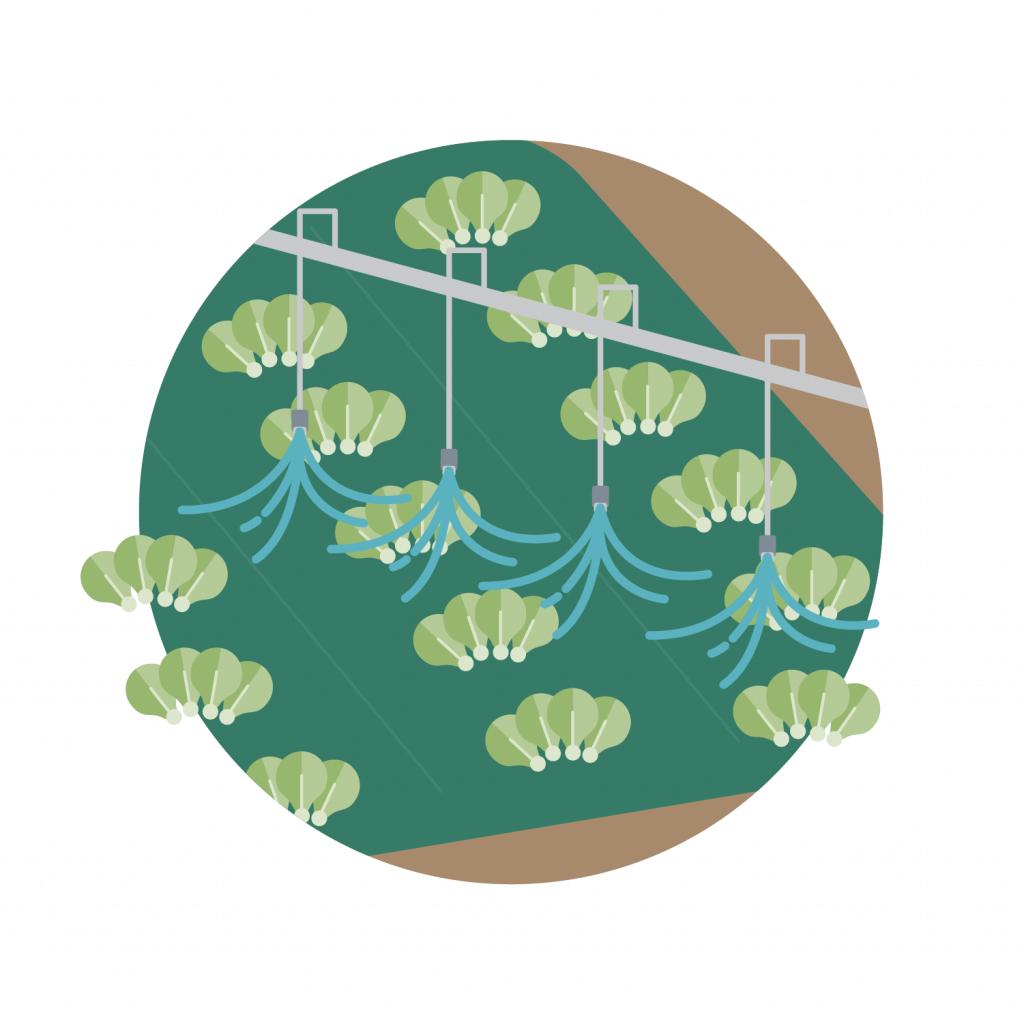Follow the Drop – Crop Irrigation

Crop Irrigation
Choosing to become a drop of irrigated water is extremely helpful for food production in the Bow River Watershed, where water is often diverted from rivers to grow crops. Irrigation is an important step towards ensuring there is enough food grown to meet demand, but it is expensive to irrigate and so the crops grown via irrigation are typically high-value, such as potatoes.
Water quality can be impacted from irrigation by the pesticides, herbicides, and nutrients applied to fields which can enter the groundwater. Careful application and best management practices, however, have reduced the extent these chemicals can be carried into waterways. To learn more about this topic, you can check out this page.
Fun Fact
Often diverted from rivers: Irrigation is one of the largest consumers of water in Alberta and around the globe. Alberta also irrigates the largest amount of land of any province in Canada (600,000+ hectares).

Where next?
Most of the water applied via irrigation is taken up by the roots of plants, or it off the leaves and soil. Becoming food or evaporating are therefore your most obvious choices for your next step. You can also, however, choose to go back to the river because water that is left over in canals after irrigation pumps are shut off is called bypass water which is allowed to flow back to the river.
